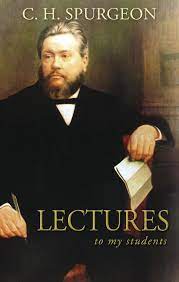Want help to write your Essay or Assignments? Click here
An Enemy of the people: Book Report
Miller’s adaptation of Ibsen’s play is highly interesting, even the preface itself is fascinating. Arthur Miller dedicates the whole preface to describing what he tried to do with Henrik Ibsen’s celebrated play, An Enemy of the People. The motivations for Arthur Miller for choosing this play was essentially to illustrate that Henrik Ibsen is not out-of-date.
One of the main intentions of Arthur Miller’s adaptation of Ibsen’s play is certainly to convey the original message. In this report, the play An Enemy of the People is discussed in an exhaustive manner. The setting of the play, the plot, the main characters and the main theme are discussed. The author of this play is also described.
An Enemy of the People is certainly one of the most well-known and popular plays amongst producers and audiences and was initially written by Henrik Ibsen in the nineteenth century. Even so, it is also believed to be one of Arthur Miller’s famous staged works. The play was written in the year 1882 by Ibsen and a small coastal town in Norway serves as the setting.
The plot of this play was rooted in the real-life censure that Henrik Ibsen went through due to his 1881 controversial play, Ghosts. Henrik Ibsen’s plays were renowned for their pragmatist style (Miller, 2010). In the year 1950, Arthur Miller requested for the right to write an adaptation of An Enemy of the People. In translating the text from Norwegian into English, Miller retained most of the original text.
Want help to write your Essay or Assignments? Click here
The play An Enemy of the People by Arthur Miller, which was adapted from Henrik Ibsen’s drama, is focused on a conflict between 2 brothers, Peter Stockmann and Dr. Stockmann. It also focuses on a conflict between the freedom and the suppression of speech. Peter Stockmann and Dr. Stockmann reside in an unidentified town which has of late finished building a medicinal bath on the town’s outer edge referred to as Kirsten Springs.
The Mayor of this town is Peter Stockmann who brags about the possible benefits which Kirsten Springs would present to the town. He envisages Kirsten Springs bringing tourists and visitors to the town – something that would increase the revenues of the town, provide enough employment opportunities for people of the town, and make businesses thrive (Ibsen, 2010). He also has the expectation that the town would in due course become a top resort in the region.
Dr. Stockmann, who is a scientist and a medical doctor, has suggested that the town should not construct Kirsten Springs in the site which has been chosen. Even so, members of the Council along with his brother Peter Stockmann disregard Dr. Stockmann’s recommendation. Dr. Stockmann believes that the water which pours into the Springs may be contaminated but he does not divulge his fears to anybody given that he does not want to alarm anybody needlessly in case he is incorrect (Miller, 2011).
In an attempt to verify what he believes to be true, Dr. Stockmann sent samples of water away to a certain university for them to be analyzed. The analysis report from the university divulges that the water which pours into the Springs is contaminated with an organic matter infection. The editor of Hovstad, a local newspaper, becomes aware of the report from the university and wants to publish this report in his newspaper.
Dr. Stockmann asks the editor, Hovstad, to hold-up printing the report until he notifies the Mayor of the town, Peter Stockmann, as regards the contents of the report. The doctor is sure that Peter would want the report published so that the people of the town could be cautioned and informed regarding the health risk.
Want help to write your Essay or Assignments? Click here
After reading the report, Peter Stockmann meets with his brother Dr. Stockmann to talk about the report. The Mayor is disappointed that Dr. Stockmann decided to examine and look into the water quality without informing him first. Peter believes that the report is overstated and that his brother wants to challenge and undermine his position since he loathes authority. In the town, Dr. Stockmann is a respected and outstanding doctor who has outdone his older brother Peter constantly (Miller, 2011).
In this situation, Peter Stockmann is confronted with an ugly truth which has the potential of destroying his dreams of the town becoming a popular and rich tourist resort. Peter also has to tackle his own personal demons in dealing with Dr. Stockmann who happens to be his accomplished younger sibling.
Peter Stockmann then spreads the word throughout the town that Dr. Stockmann wants to ruin it. The people of the town, who do not want to face the horrible prospects which the water report is representing, choose to believe that the words of their Mayor and snub Dr. Stockmann, who is not permitted to speak publicly regarding the dangers existing in the water supply of the town or publish the water report in the newspaper.
In spite of what Dr. Stockmann is confronted with, be it loss of income, threats of arrest or violence, isolation, or being called an enemy of the people, he would not forsake the truth and he in fact ends up fighting the whole town to do what is right for the town and townspeople (Ibsen, 2010). Even though when play concludes, Dr. Stockmann and his family have been banished from the town and are in fact outcasts, Dr. Stockmann is sure and positive that the path which he has chosen is the right one.
Even though he is the only individual in the town who is fighting for the truth, he recognizes eventually that he is doing what is right and that it would make him a stronger person (Miller, 2011).
Want help to write your Essay or Assignments? Click here
On the whole, the main theme in An Enemy of the People is truth and morality; this is the theme which is clear and evident. Dr. Stockmann is determined to reveal the whole truth even if the information puts himself as well as his family in danger. That crucial information could affect the safety of his friends and his neighbours also. In this play, the audience and readers follow Dr. Stockmann, a man who discovered that the town’s water supply is contaminated. As a result of his efforts to disclose this information to the people of the town, his safety, his family, and his repute are put in jeopardy.
The key characters in this play include Peter Stockmann and Dr. Stockmann. Peter, who is the town’s mayor and the brother of Dr. Stockmann, is motivated by power and money. Peter Stockmann appears to be representing the government and the lengths which the government would go just to keep its citizens uninformed of wrongdoings. In the play, Peter acts as the antagonist. Dr. Stockmann is the play’s key character and is motivated by the truth.
In spite of the cost, Dr. Stockmann wants to provide the truth to the people of the town. He is the play’s protagonist. This character may represent science, or any profession which has as issue with places or products which the government considers safe for the citizens. Other noteworthy characters are Billing and Hovstad who are actually contributors to The People’s Daily Messenger, the local newspaper (Miller, 2011).
These two characters appear to be motivated by controversy. When Billing and Hovstad concur about publishing the findings of Dr. Stockmann, Hovstad states that this is just the start, which implies that the two want to publish a number of editorials that may bring the government down. Moreover, in the play, Aslaksen is the individual who publishes The People’s Daily Messenger. Aslaksen is motivated by money and he conducts himself in a manner that may sell the most newspapers and keep the peace with the people of the town.
Want help to write your Essay or Assignments? Click here
Conclusion
In conclusion, An Enemy of the People play is without doubt one of the most renowned plays amongst producers and audiences and was initially written by Henrik Ibsen in the nineteenth century. In spite of that, it is also one of Arthur Miller’s eminent staged works. Truth and morality is the overriding theme in this play. Dr. Stockmann is strong-minded and wants to expose the whole truth although the information puts himself as well as his family in danger. The key characters include Dr. Stockman, Peter Stockman, Billing and Hovstad.
References
Ibsen, H. (2010). An enemy of the people. London, England: Penguin Plays Miller, A. (2011). An enemy of the people. Adapted by Arthur Miller. New York City, NY: Longman Literature
Want help to write your Essay or Assignments? Click here





